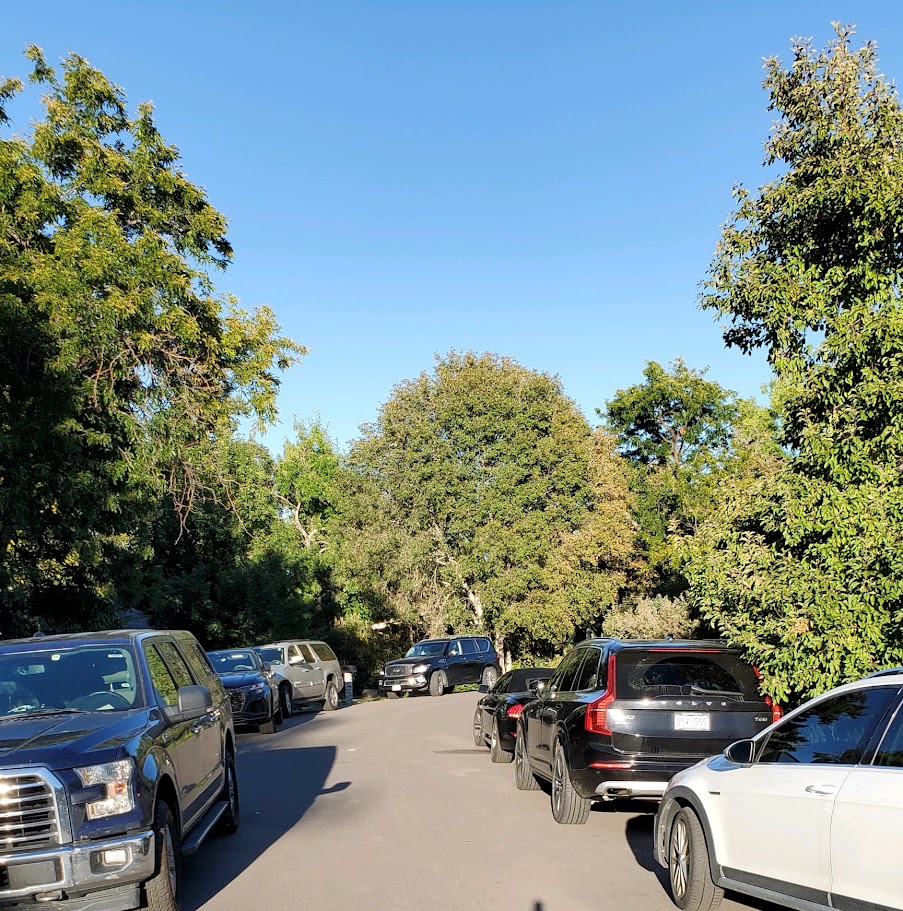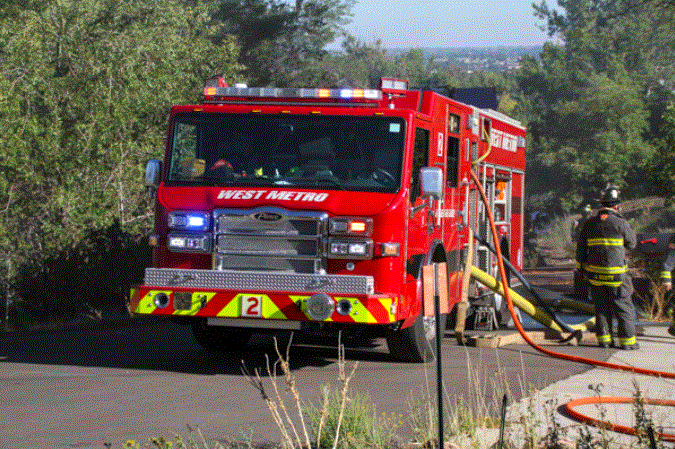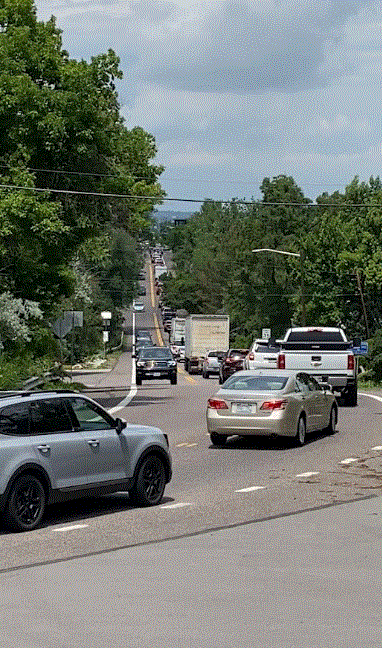Guest Submission from Toni Riggio, sent to City of Lakewood Planning, Engineering, Traffic and Ward 1 members
This letter is in response to the Subdivision Notification Letter received by mail by the City of Lakewood on 5/3/24. There is a multi-family development that is proposed at 1515 Whippoorwill Dr (Ward 1) with the Ingress/Egress at Youngfield St, 15h Pl and Youngfield Dr and I am writing in opposition to that access point based on the following reasons:
Concerns and Comments for Case# FI23-0016 and S23-0025/1515 Whippoorwill Dr
Proposed Ingress/Egress is where 3 streets come together
1- Youngfield Street: is an increasingly busy corridor. Traveling South requires a full stop at the blind curve to see oncoming traffic before turning onto 15th Pl. Traveling North has low visibility as you turn right onto 15th Pl.
2- 15th Place: Per Aldridge Transportation Consultants recent memo in etrakit, is “a steep 10% grade” uphill as you turn in. This street is a no outlet/ not a thru street that serves 13 homes.
3- Youngfield Drive: is currently a narrow dirt road, not a through street with limited width to expand to the required 36’ for Mixed Use zoning. Lakewood has made an exception for 28’ which makes the entirety of the Road a fire lane per Metro West Fire Dept.
The neighbors have proposed the Ingress/Egress to be at Colfax Ave for a myriad of safety issues and concerns which are highlighted in this document. The ongoing meetings the neighbors and Applewood Valley Assoc have had with both the developer and the City of Lakewood to have access at Colfax Ave have yielded little results to date. This plot of land was originally zoned Residential (R-1A) and in 2012 rezoned to Mixed Use Suburban, because it backs Colfax Ave. We were given a few reasons why the entrance and exit can’t be on W. Colfax; however, the 2014 plans from the City of Lakewood mandated the access to the site to be at W. Colfax Ave, for the same developer and site. In 2023 the City of Lakewood allowed a Multi-family Residential unit to have access from W. Colfax. This site is across the street from this proposed Williams Point site. Further, based on the CDOT referral, it appears that CDOT is not opposed to the development to be accessed through W. Colfax Avenue as they note in their referral “No access is being proposed on Colfax. If access to Colfax is proposed in the future, the City of Lakewood is the Issuing Authority, so the discussion for access will need to begin with Lakewood.”
This 1.6-acre plot has challenging topography, is crammed with utilities; electric, gas, water, sewer and communications. It has been owned by the current Developer for over 20 yrs. It wasn’t until they received a 9% tax credit from CHFA that they were able to get green lit for max density housing. The CHFA funding was approved based on half-truths of being adjacent to a bus stop and community outreach and acceptance, both which were requirements. None of the immediate 13 homeowners to the proposed project were ever notified prior to this grant. Also, the bus stop, while adjacent to the property, has no direct access from the development without walking/biking .8 miles down a 10% grade on W. 15th Pl, without sidewalks or street lights, out to Youngfield St up to W Colfax Ave which has high traffic, steep grades and no sidewalk, creating safety, ADA concerns and other complexities. Further, employment opportunities, schools and parks are between 1 to 1.5 miles away There is a proposed retaining wall and infrastructure to hold up Colfax Ave which will prevent direct access to and from the public transportation from the proposed development site. (Note: Per CHFA requirements the access to public transportation needs to be within a half mile.)
A traffic study by Aldridge Transportation Consultants, estimates a daily 300+ car trips entering and exiting. The proposed project will have (44) 1- 3-bedroom units with 70 parking spaces. This will result in overflow parking on the fire lane and existing neighborhood, where little enforcement will be available or take even place. The Aldridge traffic study does not take into account the addition of Lutheran Hospital employing 2200 people and many other high-density housing going in nearby. Also, traffic is re-routed to Youngfield St whenever there is an accident on the parallel I-70 highway. This creates bumper to bumper traffic on Youngfield St. each time. The most recent memo from Aldridge fails to address traffic approaching 15th Pl travelling South on Youngfield St and turning left onto 15th Pl.
We are extremely concerned about emergency access back to our neighborhood, as we have had two fires within 10yrs. We are in a special high wind district, which was recently cited by Metro West Fire Dept to be the leading cause of dry brush fires, that is no longer seasonal, but year round.
The existing neighborhood was built in the 50’s. The 2 roads 15th Pl a cul-de-sac and Whippoorwill Dr. a dead end. In most sections, the widths are 21-22’ no curb and gutter and drainage ditches on both sides and each with roadside mail delivery and trash pickup. This is where overflow parking will occur but is not adequate to receive the additional cars and would make it very difficult for emergency or fire crews to reach the existing neighborhood.
The neighbors in this area have witnessed pedestrians falling in the street while walking out of Youndfield Dr onto 15th Pl steep grade next to Youngfield St in winter conditions. There have been a multitude of cars getting stuck and/or sliding down 15th Pl to Youngfield St with snow and ice conditions. This has also included delivery/mail trucks, City of Lakewood snow plows getting stuck in the ditches at the intersection of 15th Pl and Youngfield St When approaching entrance to 15th Pl in the snow, you need momentum and speed to get up the 10% grade requiring 4-wheel drive vehicles to be successful. While having this grade may not be uncommon in our mountainous State, this is a contentious intersection with the convergence of these three streets. 2 with steep grades, 1 an increasingly busy street with questionable visibility in both directions.
We have documented the above stated events with videos and photos over the recent 2 years, some but not all are attached here, which have been shared and or provided to City Planning/ Engineers/Commission, City Council members, Developer, AVA, and many residents. I would add that as a resident of this neighborhood for 30 years, I have witnessed these occurrences many times over each and every year, including a head-on-collision at the Youngfield St curve a decade ago. These incidents and accidents will only rise with the addition of this Subdivision development.
Reference Lakewood Title 16.3.1, 16.3.2 Subdivision Standards, 16.3.8 1-4 Street and transportation patterns and connectivity and 16.3.9, this Subdivision does not meet the City’s own Ordinances unless many exceptions, variances or different interpretations are made.
While this only represents a partial detail of concerns, my hope is you will strongly consider these life, safety and ADA issues and concerns brought forth in regards to the Access point for this Subdivision Plat going forward and require the Ingress/Egress to be at Colfax Ave.
Safety First!
Thank you for your time and consideration,
Toni Riggio
Applewood Heights Resident
Photos and Videos below to account for the issues brought to your attention regarding the Subdivision Plat Case # FI23-0016/ D23-0025




Links to vehicles without 4WD trying and failing to get up the 15th Pl steep grade in the snow. (Copy and paste link to view)
https://photos.app.goo.gl/4ZWqmWaFHNKVU4vd6
https://photos.app.goo.gl/HZnAeWUTkq8UXv4z7
Link to Prime driver unable to come up the 15th Pl grade, parked at the blind curve to deliver packages, forcing cars to go around into oncoming traffic.https://photos.app.goo.gl/o2TRfw9B8UYMkMWm6